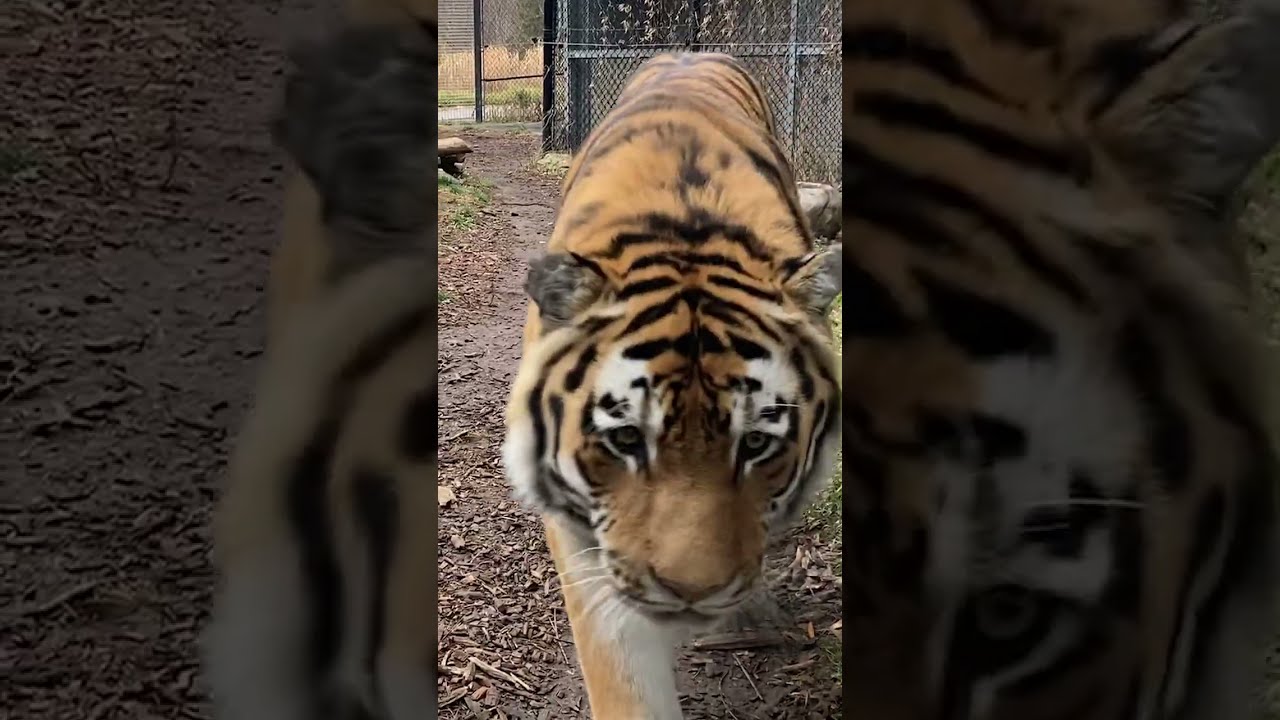– **Transportation Logistics**: Discover the meticulous planning of moving a large carnivore like the Amur tiger.
– **Training and Conditioning**: Learn how trainers use positive reinforcement methods to prepare these majestic animals for transport.
– **Animal Welfare during Transition**: Understand the practices to ensure the tiger’s wellbeing during relocation.
– **Collaborative Efforts**: Explore the teamwork among zoos, conservationists, and logistic experts in tiger relocation.
– **Conservation Significance**: Gain insights into why relocating Amur tigers contributes to the species’ preservation efforts.
Transporting an apex predator such as the Amur tiger across the country is no small feat. It’s an intricate ballet of logistics, animal husbandry, and collaboration that requires months, if not years, of preparation. To say it’s akin to moving a furry force of nature with a calm disposition is an understatement. The end goal, however, is resplendent with purpose: to contribute to conserving a species that roars at the brink of extinction.
The journey begins long before the tiger sets a paw into a transport crate. It is rooted in a process that may seem as enigmatic as it is elaborate. Let’s peel back the curtain and trek through this captivating endeavor.
**The Prelude to Paws in Motion**
Initially, there’s the consideration of logistics. Specialists must factor in the animal’s size, weight, and the special needs characteristic of the species. Amur tigers are the largest of their kin; hence, their accommodations for transport must be spacious enough to allow movement but secure enough to ensure safety—for both the tiger and the humans involved.
The vehicle, typically a climate-controlled truck, must withstand the mass and might of such a regal creature. Routes are meticulously charted, avoiding tumultuous terrain and ensuring the shortest, most stress-free path is taken. Air transport is sometimes employed for lengthier expeditions, a dance of precision scheduling and coordination with the ability to airlift such a unique, sizeable passenger.
The crate itself is a piece of engineering marvel. Robust yet comfortable, it is designed to cater to the tiger’s comforts, equipped with familiar scents and a bedding area to lie down. Naturally, the finest safety locks are non-negotiable. Given the importance of maintaining a stable environment, the ability to monitor and adjust the interior climate from the outside is a crucial feature.
**Training: The Crux of Cooperation**
Positive reinforcement training takes center stage well in advance of the planned move. Keepers and trainers work tirelessly with the tiger, establishing a rapport and trust and encouraging voluntary participation through rewards. It’s a delicate dance where the tiger’s natural caution must be respected even as it’s gently coaxed into becoming an active participant in its relocation.
This form of training ensures that when the day comes, the tiger is not simply thrust into a novel environment but walks into the transport crate of its own volition. This dramatically reduces the stress levels for the animal and allows the transportation team to maintain a higher degree of control over the situation.
**Welfare on the Way**
Once on the move, the tiger’s comfort and security are paramount. Veterinary teams are prepared for every contingency, monitoring vital statistics without intruding on the tiger’s space. Regular stops are made to check on the big cat’s well-being without causing undue stress, ensuring access to water and assessing their overall demeanor.
It’s a delicate balance of vigilance and non-intrusion. Tiger transport teams are a mixture of a calming presence and action-ready responders, versed in the depth of their knowledge about the species’ behaviors and needs.
**A Symphony of Collaboration**
A symphony of collaborative effort stands behind the scenes and sometimes in the limelight. Zoos work hand-in-hand with conservationists and logistics experts, each playing their part to fine-tune the process. Every tiger’s move is grounded in a common goal: to promote genetic diversity and strengthen the species’ conservation status.
The ongoing communication between the sending and receiving facilities is part of each relocation. This is not simply a transaction but a handover of care, complete with detailed records of habits, health, and preferred enrichment activities.
**Echoing the Larger Conservation Call**
Every move of an Amur tiger echoes the greater call for conservation. These transports align with Species Survival Plans geared toward the genetic salvation of this precious species. By transferring tigers between zoos and conservation parks, we maintain a healthy, genetically diverse population in human care—an insurance policy against extinction in the wild.
The Amur tiger’s plight is stark; their wild numbers hang in a precarious balance, with poaching and habitat loss eroding their chance for survival. These challenges underscore the significance of each carefully orchestrated move, imbuing the endeavor with a gravity that goes beyond the mere physical transportation of an animal. It is a bolster against oblivion, a stride in the marathon to preserve the inimitable charisma that tigers bring to our world’s wild tapestry.
In conclusion, such a journey for one of nature’s most awe-inspiring predators is not a tale of simply getting from point A to point B. It’s an odyssey rich with detail, expertise, and compassion. It’s a tapestry woven with the threads of logistics, training, welfare, and collaboration, underpinned by a commitment to a species whose existence is imperiled yet whose spirit remains unbroken.
The Amur tiger’s trek across a continent thus becomes more than a relocation—it’s a testament to human ingenuity and dedication, a marvel of modern conservation efforts, and a profound chapter in the narrative of a species that continues to inspire awe and reverence across the globe. As we celebrate these meticulous movements, we reflect on the interconnectedness of life and our role in preserving it. In ensuring the tiger’s future, we also anchor a part of ourselves to the world’s intrinsic wildness and vitality.
*****
Source Description
How do you move an Amur tiger across the country? 🐅
Vasili made it to The Calgary Zoo safe and sound earlier last week with the help of cooperative care and positive reinforcement training in preparation for his travels 🌎 #TrainingTuesday

